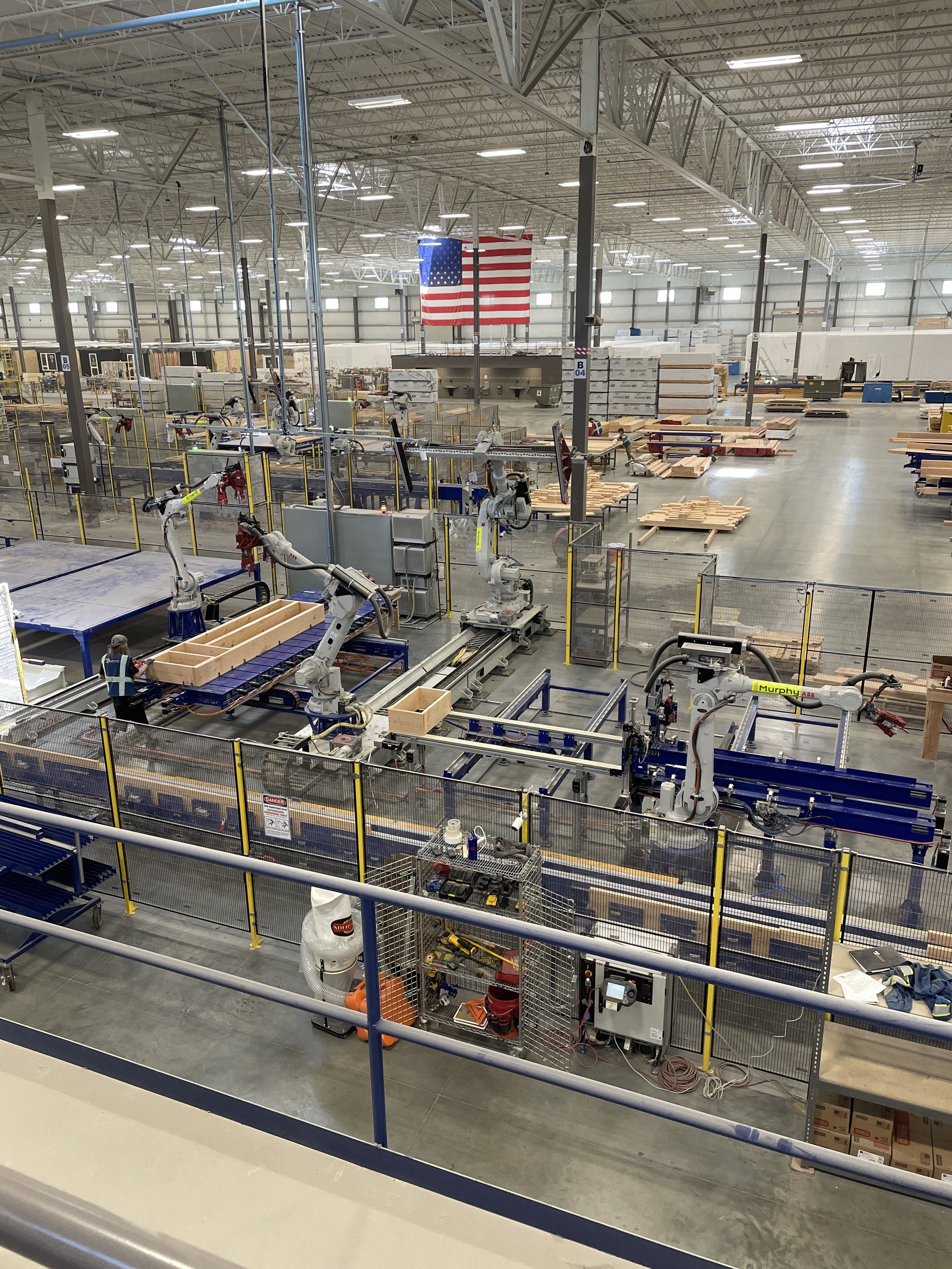AERO partner, Andrew Crane, had the opportunity to tour two modular factories this summer in preparation for the construction of a workforce housing development at 400 E Adams. We learned much about the process, including how it can increase quality and save time in construction.
First, a little background on the project. 400 E Adams is an 88-unit apartment building with a mix of units priced for individuals or families at income levels of 120-150 percent of the area's mean income level with 11 percent of units priced at the extremely low income level. The project owner, Markwood Enterprises, set a goal to finance and build the property without using grants or other public funding. This project is turning into a great case study on how developers can contribute to alleviating the housing crisis while still being economically feasible. An essential aspect of that strategy is taking advantage of modular construction.
Some of the cost efficiencies of modular construction come from automating the process. At one factory we toured, robots do about 60% of the building. A side benefit of this approach is that it eliminates much of the needed body strength that an individual would need on a traditional job site, making it a much more available job for people of different abilities.
Modular construction works best when the building form is simple and repetitive actions, like installing the same finishes in every unit, can be achieved. In contrast, this construction method might not be as cost-effective for luxury condos where finishes and appliance packages vary.
The building is delivered as a series of "boxes" that fit on a flatbed truck. For this project, we are receiving 48 boxes to achieve 88 units. Each box contains 1-2 fully finished, self-contained and locked apartments. Some hotels use this construction method to have fully finished and furnished hotel rooms delivered and assembled on a new property, artwork, furniture, appliances and all!
Once the boxes get to the construction site, the process looks more traditional. A general contractor or construction management firm manages the on-site construction. They complete the site work and then hire a "setter" to crane in the modular units and strap them together. After assembly, the contractor roofs and sides the building and connects the utilities through the hallways.
An aspect of this construction process we will be testing is the noise impact on the surrounding community. We hypothesize that construction noise and duration will be significantly lowered, making construction projects like this less inconvenient for the neighborhood and easier for developers to gain community support for their projects.
Another benefit of modular construction is the quality of the final product. Double framed demising walls and floor ceiling assemblies are standard, creating a more durable structure with a higher R-value. That translates to better soundproofing between units and better energy efficiencies. Both good selling points for a property. Quality control and building efficiencies are also improved, saving developers time and money.



